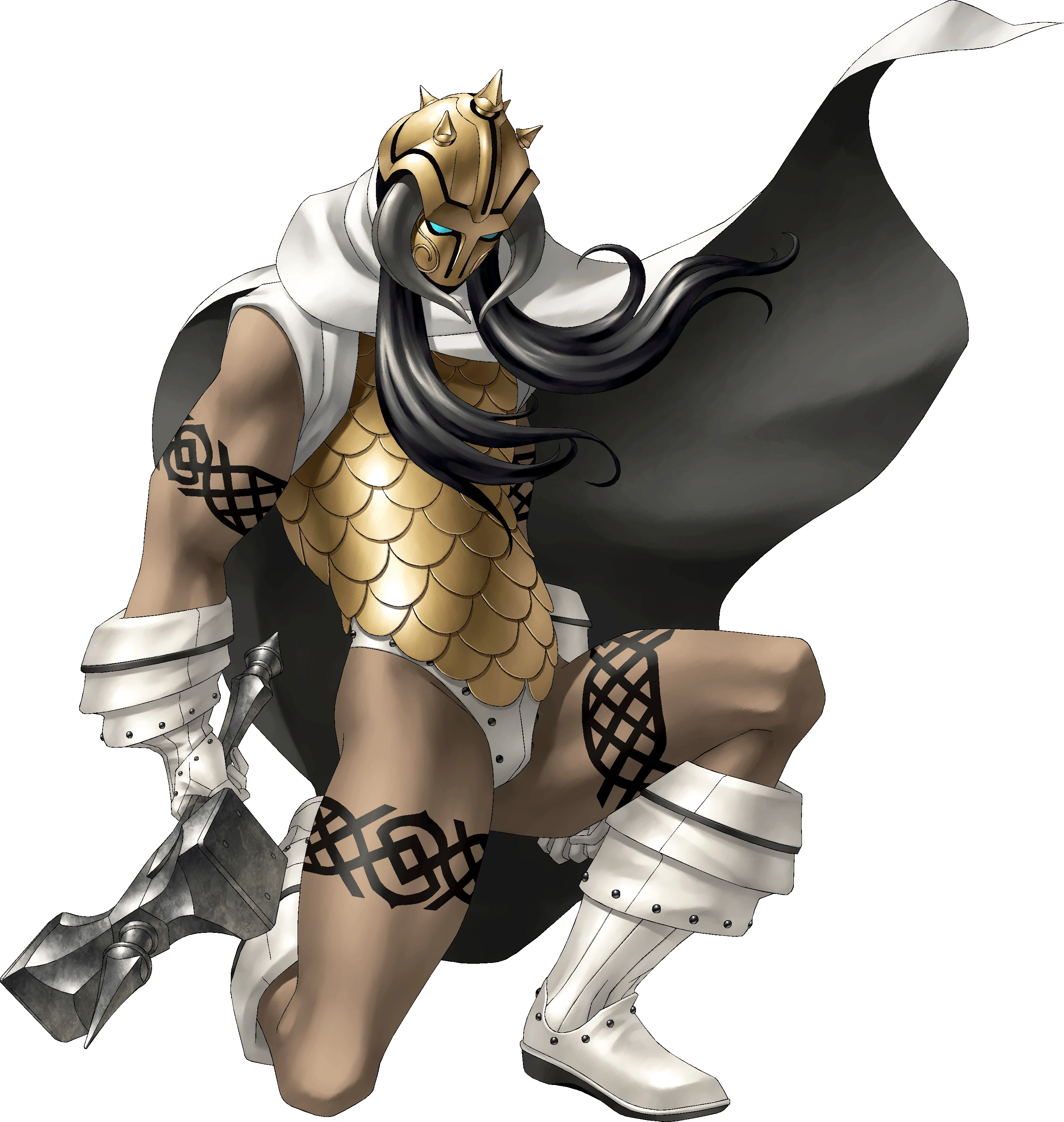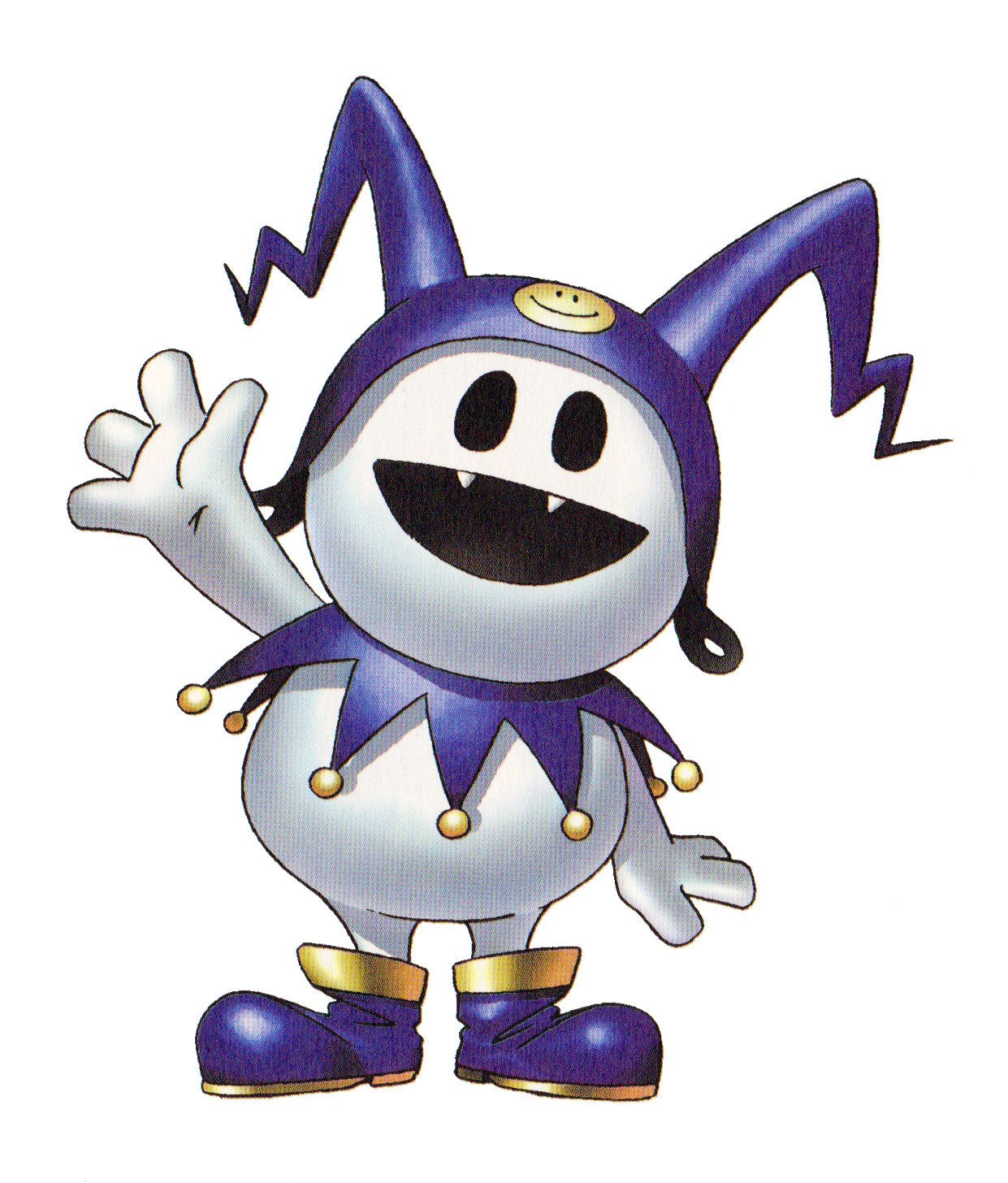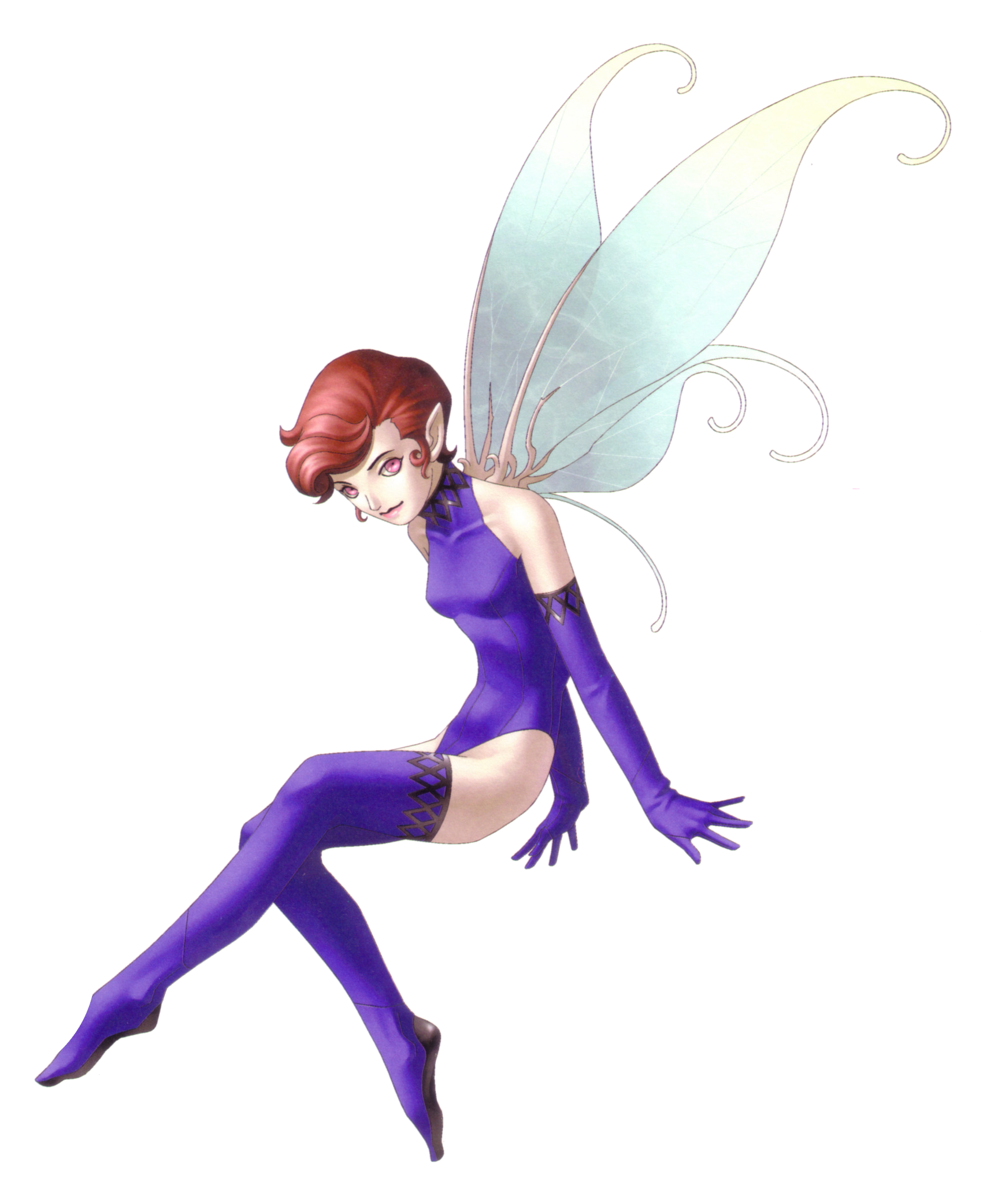What is SMT? (Grossly Oversimplified)
I’ll try to abridge this explanation as best as possible. Shin Megami Tensei, or SMT, is a series of RPGs made by Atlus, who is a subsidiary of Sega. What separates them from your typical high fantasy RPGs with wind-swept hairstyles and self-insert protags is the depth of the combat systems.
If you’ve played Pokémon, it’s actually not much different, except instead of a 10 year old solving the problems of adults for 10-20 hours, you’re using demons of various origins to attack and dethrone God. It’s hard to identify the similarities between this and Pokémon, but at their core mechanics, they’re both creature collectors with turn-based combat. If you wish to know just how deep the rabbit hole goes, Atlus’ MegaTen wiki page is an excellent place to start.
So What Game Did I Beat?
I beat the 5th numbered installment of the series, Shin Megami Tensei V for the Nintendo Switch. It released in November of 2021, though I didn’t get around to playing it until December of last year. I remember when this game was first teased, which was during the Switch’s unveiling in 2017. Back then, the most exposure I had had to the franchise was Persona 4 Golden, which got a port to the PS Vita if anyone remembers that handheld.
If you’re unaware, the Persona series is a spin-off of Shin Megami Tensei. Shin Megami Tensei: Persona, or just Persona, started as an experimental game that asked you to balance the albeit simpler combat of an SMT game while managing relationships forged through the other half of the game via slice-of-life moments. Ironically, I haven’t finished P4G myself, though I know the general story beats and the ending. That’s another game on my ever-growing backlog.
Should I try SMT?
Yes. This isn’t even a biased answer. If you like occult stuff, the concept of warring beliefs or just turn-based RPGs in general, you should give an SMT game a shot. Obviously do some research on what mechanics, setting or system you can play it on, but absolutely you should try to play at least one. As long as you are aware that not every SMT game is a perfect entry point, you should be able to find one that best suites your interests. The biggest limiting factor is likely what platforms they are available on.
If you have a Switch, then you already have access to both of the biggest entries in the SMT franchise, namely SMT 5 and SMT 3: Nocturne. If you’ve heard of SMT, you probably heard about it through Nocturne. It’s frequently touted for being incredibly difficult and annoying given that random encounters happen everywhere. However, seeing as the fighting is a core element of the gameplay loop, it’s important to remember that the random encounters aren’t to hinder your progress to the next content, they are the content.
SMT 5 doesn’t nearly have this problem, as every enemy is visible on the overworld, so encounters you don’t want to take can simply be avoided. As for the difficulty, the recent remaster of Nocturne has included a merciful difficulty, allowing people who are more interested in seeing the story an avenue as well.
If you have an Xbox or PlayStation that is newer than 2012, you have the next widest library to choose from. In addition to 3 and 5, you’ll also be able to experience a sequel to another SMT franchise, Soul Hackers 2. I haven’t experienced it myself, but seeing as how it’s the next newest game in the franchise, it may have more of the quality of life changes you desire in your video games.
However, without a shadow of a doubt, the best way to experience the franchise will forever be through PC. Seeing as how a PC can effectively be any console prior to the Xbox One and PS4 era, it has access to every SMT game that you can obtain. Again, please do your research, as some games like Devil Survivor assume you have a competent understanding of how the fusion mechanics work for demons.
What I Liked
Combat
Combat follows the standard structure of each character having a turn in, except the order is always the same for your party. Each party member has an Agility stat, but that affects far more than the instances where turn order must be decided. Basically, if your team goes first, everyone on your team goes before your opponent. You start with 4 possible moves that are used when attacking or using items. However, if you can either strike a weakness of an enemy or land a critical hit, you use 1/2 a move instead. Effectively, you’re gaining an additional use of an action, up to a maximum of 8 total actions you can take for the entirety of your turn. There are multiple ways that this ability can be utilized, either to deal maximum damage with weakness-exploiting attacks, or allow for support or healing demons to prepare your party for the next round of enemy moves.
Unfortunately, it’s not all positives when it comes to the press turn system. For instance, if you miss an attack, you waste the move you just used, and an additional turn from your pool, regardless of whether you utilized the extra turns from them or not. In the worst case scenario, your attack is canceled out by an enemy, or reflected back at you. This means you lose all remaining actions. It heavily incentivizes you to study your opponent, and not abuse attacks that target the entire enemy side to save time.
Fortunately, there’s an upside to all this. Enemies follow the exact same rules you do. Meaning, if your team is structured in such a way that they reflect, absorb or cancel an attack, you can force the enemy to pass their entire turn. Thus, you’re incentivized to prepare accordingly for the current boss or mini-boss. This is drastically different from how Pokémon handles bosses, where enough leveling of a very powerful Pokémon will eventually allow you past the road block. That’s not to say that similar behavior is impossible in SMT, but it’s leagues more efficient to actually prepare a better team.
Designs



I’m a sucker for mythology of various origins. Luckily for me, I’ve been living under a rock all this time, as SMT draws inspiration from all those and more. At any given time your party will have multiple pantheons of demons such as Thor, Apsaras or even an Archangel. The contrast of designs and mythos are made more apparent as your three main demons occupy the same space on the field while the rest wait on your bench. Having multiple party members present on the field and their designs contrasting or even showing similarities is another reason I think I was able to finish my playthrough of Digimon Story Cyber Sleuth. That and the edgey designs that quite a few digimon possess. If you prefer visual examples, search up official artwork for Mastemon, Ravemon or Diaboromon.
It’s no secret that at this point in my life, I’ve become increasingly frustrated by the designs that pokémon have received. Ultimately this is personal bias because the games still sell in obscene quantities and if it’s not broken they aren’t fixing it. I just don’t understand why a rabbit eventually evolves to wearing pants or largely follows a soccer aesthetic. As I don’t want to spend the rest of this post dissecting my grievances with a children’s RPG, I’ll shift focus into what make SMT and Pokémon different.
Mechanics
As you progress through the game, your roster of recruited demons will begin reaching a rather large size. Thus, the player can devote slots to favorites that don’t have a replacement yet, or still serve a niche that newer demons don’t. As for Pokémon games, you typically are constructing a team of 6 party members, with the goal being a team that can overcome the next challenge presented to the player. This is where the design philosophies differ again. In Pokémon, a majority of your team will go unchanged the entire playthrough. For people who have played Pokémon before, how many of them require you to replace most of your team because they’re too weak for the current gym, or can’t learn moves that allow them to cover for types you might not have? What’s worse is that depending on how generous the Pokémon game is, you may only ever replace one or two party members during the entire journey.
In contrast, the only slot in SMT games that will never change is the slot for your protagonist. This is mostly for lore reasons, but also because the protagonist is in theory the strongest demon you’ll ever have. As your protagonist progresses through the plot, they’ll be met with opportunities to add skills to their repertoire, allowing the player to shape their protagonist to their whim. This is a point in which playthroughs can be vastly different, even with the same pieces. In one playthrough, you may allocate most of the protagonists skills to different elements, allowing them to always exploit the weaknesses of your enemies. In a later playthrough you may decide that it’s better for your protagonist to be a support or healer type, leaving the job of bruiser to your other party members. Coincidentally, since your protagonist must stay relevant the entire game, they naturally level at an increased rate compared to demons. To explain just how different these two franchises handle this problem, let’s once again use a comparison from Pokémon.
In every main entry, a specific evolution line or type will be harder to raise than others. This is usually a dragon type, or a dual type featuring dragon. They also don’t show up until the end of the game, as they are so powerful that they can take down end game parties single-handed. They may require a ton of grinding to make relevant, again to offset the massive benefits you’ll eventually possess. Now imagine that every pokémon required that much investment to stay relevant. Regardless of the SMT game you’re playing, demons you recruit along the way will take exponentially more experience to keep them useful for the given challenge your character is facing. If this sounds scary, fear not, as this is by design, and encourages the use of the rest of the systems SMT offers. Namely, negotiating with new demons, or fusing old ones to make slightly more powerful ones.
By Our Powers Combined (Is this reference too old?)
By incentivizing you to replace weaker demons by fusing or recruiting new ones, your party’s plan can slowly shift from one that is decimated by the current roadblock to one that laughs as your opponent wastes their turns having their attacks absorbed or reflected back, canceling the rest of their turn in the process. Once, I had a party comprised of glass cannons, intent on wiping out enemies before they had a chance to retaliate. I’ve also had a team that specialized in debuffs, buffs and siphoning resources from enemies to sustain themselves.
There are additional benefits to fusing demons besides maintaining a play style you prefer or bringing the right resistances for the enemy. One, you can always buy back the demons you’re losing, in the last state you saved them as in your compendium. This is less like a PC in Pokémon, and more like a bookmark to a website. Then, when you encounter another enemy whose weaknesses you’ve already prepared for, you can pull from this repertoire of demons to quickly overcome them. Two, the skills your outdated demons possess are the keys to success that their fusion result desires.
You may be creating a demon who is a powerhouse with high strength, but their best moves have low accuracy. They may be decent as they currently are, but through the power of fusion, we can bestow upon them the abilities necessary to overcome their weaknesses. An example that solves the previously mentioned demon’s problem would be to take a skill called Concentrate from one of the fused demons and giving it to the resulting one. Now, the power house demon can use the skill they shouldn’t have to prep for attack phases, giving them a 100% hit rate and making it a guaranteed critical.
As I progressed into the later portions of my playthrough, I began to notice an additional benefit that this system allows. Demons that share a particular typing such as Femme, Devil or Megami can exploit another type of demon known as Elementals. Elemental demons possess an interesting feature that when they are fused with, they will either upgrade the demon to the next strongest one for its type, or it will downgrade to the previous one. Adding this into the already packed toolbox of mechanics meant that building optimal teams was as painless as they could possibly make it.
This can result in interesting circumstances where your party is resistant to most skill types in the game, ignore losing turns if an attack is repelled or absorbed, or buffing themselves to allow for overhealing and increasing its potency.
Music
This section comes second last because it’s the one that I resonated with the most. Simply put, the soundtrack to this game is phenomenal, though from what I’ve learned that’s almost expected from every SMT game. Basic encounters, mini-bosses and even certain enemies have their own themes. Some sound inspired from heavy metal while others are a fusion of EDM, ornamental instruments and organs. There are references to other songs in nearly every track, which I’m a complete sucker for. My personal favorites are Battle -Droll-, Spiral and Battle -Dancing Crazy Murder-.
Another thing I’m a complete sucker for is when a soundtrack is composed alongside your actions. That is to say, the current game state and actions the player is taking are adding or removing elements to the overall soundtrack. Examples of this include the alternate theme when riding a Yoshi in Super Mario World or the speed of a song is affected by your moment, like the levels in Super Mario Galaxy where you are balancing on a ball.
The instance where this happens the most in SMT 5 is in overworld fights. So long as your team wins the initiative, you aren’t greeted with a kick in the chest from the soundtrack. Instead, you’re met with vague guitar strums that are almost like droning. This moment can only occur once each battle, and the duration of which is until the player chooses their first action. By doing this, the impact of that first move matches the opening of the song. It’s hard to find an example using actual battle footage, but this is the best example I could find where the opening is included with the song.
If you’ve listened to enough SMT music, you’ll also start to notice a trend that most combat tracks adhere to. The openings are typically loud and up front, but are also divided up into moments where the harmony is allowed to take center stage, which mimics the pacing of combat going from engaging action to tactical planning. The added bonus of including so many incredible but rarely used tracks is that most don’t hit a point of being overused. However I feel that this is more of a benefit that SMT 5 alone has, and not so much the other titles in the series.
Summary
It’s not an understatement to say that I will be thinking of this game randomly for the rest of my life. I’ll be at the beach or walking through a grocery store and a song from the game or a mechanic I remember using will collide with whatever I was originally thinking about. It will be the RPG I compare subsequent ones to, even if they aren’t from the same franchise. I’m a big supporter of games that inspire the rest of their genre, whose mechanics echo throughout other titles hoping to capture a bit of the essence that made that cult classic such a great entry.
Obviously since SMT 5 is my first real foray into the Shin Megami Tensei series, it will be the standard I use to compare older titles, for better or worse. I’m excited to experience what else is out there, and there will probably be moments those games do better than SMT 5 could.